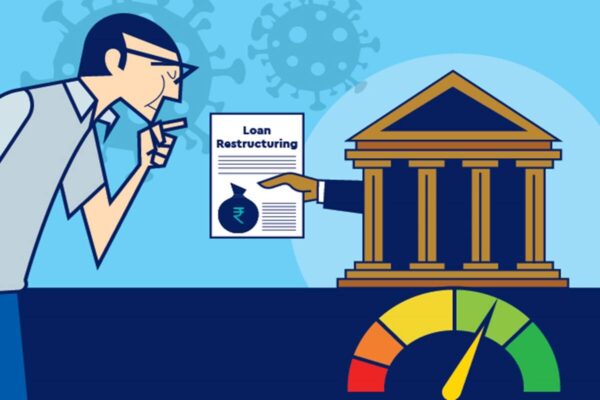Originally, the loan moratorium was proposed as a temporary measure for retail borrowers to prevent default on repayment of loans due to the financial hardship caused by the Covid-19 crisis. The moratorium was granted for six months until 31 August 2020, after which it was extended until 28 September 2020, under the direction of the Supreme Court. The RBI launched a loan restructuring solution for such borrowers who are facing severe financial setbacks due to the pandemic, as it looked like the moratorium could not be extended for a longer time. Some banks have already developed restructuring plans to enable borrowers who are unable to repay their unpaid moratorium EMIs to obtain some form of relief in terms of deferment of the immediate loan repayment obligation after paying the applicable personal loan interest and additional charges during the restructuring era.
Now the question is if you’re eligible for it, should you really opt for the loan restructuring plan? A restructuring agreement can be useful in some situations where there is no way to arrange the repayment dues and the creditor does not want to get into credit default. Nevertheless, there are certain crucial circumstances where taking credit restructuring may not be a good idea. Let’s look at a couple of these circumstances where, in such cases, you can stop taking a turnaround plan and consider the best choices.
-
If you have sufficient income to repay your loan without restructuring assistance
It is not advisable to go for the loan repayment option if you have enough money at your disposal to repay the unpaid loan sum. It will be reported to the credit bureau and reflected as ‘restructured’ even if you opt for a restructuring of a single loan product. This suggests that if you have the need for another loan sometime in the future, there could be concerns about your repayment potential, which could in turn lead to difficulties applying for a personal loan. Furthermore, choosing the restructuring plan would lead to extending the tenure of your loan and snowballing your personal loan interest dues, items that could delay your path to obtain financial independence. Therefore, if you have enough funds to repay the loan and do not have an immediate need for such funds, use it to repay the pending moratorium. If you have financing needs in the future, you can borrow from the bank again.
-
If you do not have a restructured loan repayment schedule
Restructuring includes careful repayment preparation. If you don’t have a strategy, all of your finances will end up hurting you. In order to be able to keep aside a fund for payment of the restructured debt, you should be mindful of your current income and expenses, as well as projected income and expenses in the future. In the absence of a restructured loan repayment plan, you may end up paying further personal loan interest rates or choosing the wrong restructuring choice that you may not be able to satisfy. So if you are serious about choosing the restructuring alternative, it’s better to stay prepared.
-
When retirement is near
Restructuring could raise the debt burden and stretch the tenure of your loan to your post-retirement years, when it could be much more difficult to repay. If you are still uncertain of setting up your objective retirement corpus, it might be best to avoid the option of restructuring that extends beyond your retirement year. By entering your retirement with a loan repayment obligation, you can fall short of liquidity. Even if it applies to your retirement years, if you do not have a choice but to opt for loan restructuring, look for a part-time post-retirement income option so that you can absorb the extra financial burden.
-
When you can repay using another loan at a lower rate of borrowing
If you plan to opt for the restructuring of high-interest loan items, such as outstanding or unsecured credit card loans, it is best to consider other options first. You will use your fixed deposits or investments to get a secured loan which is likely to require a lower personal loan interest rate and might provide a longer repayment tenure. A secured loan can help you save on the interest due and can also provide greater flexibility for repayment. So, if you have an alternative available for arranging the necessary money with a cheaper borrowing option, avoid loan restructuring.
-
When it disrupts your main financial objectives
You might be trying to restructure a loan, but also think about the things you may be putting at stake by doing so. You will want to review your decision if you put your other main financial priorities such as your children’s education fund at risk due to restructuring or if doing so will translate into downsizing your health or life insurance cover or exhausting your emergency fund.
It is important to note that restructuring of loans is not the final solution, but rather one of the different options open to you to address the cash flow problems that the pandemic requires. That being said, after careful consideration of its effect on your finances, if you think you have to opt for the restructuring plan, do have the necessary repayment plan and exercise a high level of financial discipline to stick to your plan.
A personal loan available on FINSERV Markets will be a great choice if you are thinking of taking it out. It comes with a flexible tenure for repayment, amazing deals, low interest rates, a swap option for the loan balance, and other top-up options. It also provides protection that you can use to cover the individuals that you love. The entire application and approval process is simple, quick and can be done entirely online or on the personal loan app.




















Be First to Comment